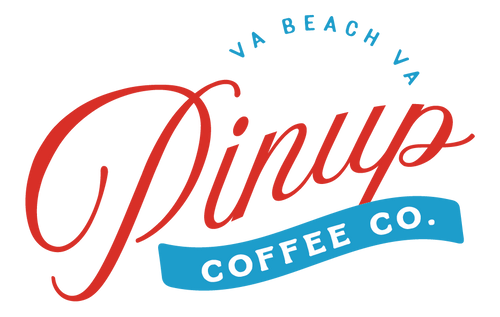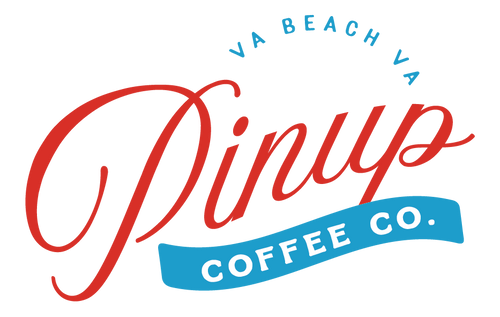Single Origin Coffee vs Coffee Blends
Coffee Blends Edition
Coffee blends are one of the most versatile and appreciated creations in the coffee industry. While some roasters blend for different purposes, here you can learn about why blends are created and how to spot a high-quality coffee bag for yourself. We’ll help you find the perfect coffee for your taste, brewing method, and lifestyle.
To start, have you ever wondered about the difference between single origin coffee and blends? If so, you're in the right place. Whether you're a seasoned coffee lover or just starting out, we'll explore the unique flavors and stories behind each. With this knowledge you will be well-armed to understand the difference between the two offerings and what to look for in a roaster.
What is a Coffee Blend?
A coffee blend is just like it sounds: a blend of different coffees. Usually this is a blend of different origins, regions, or processing methods, with a goal of a consistent flavor profile. This means that if a roaster wants to create an espresso blend, they will select different coffees in order to target a specific and dedicated flavor profile for delicious espresso. They might take a Brazil, an Indonesian coffee, and a Guatemalan coffee because these coffees are known for their more chocolatey profile, and then roast them dark if they desire a more robust espresso that pairs well with milk. The goal of blended coffee is to create a consistent, balanced cup of coffee that is available year-round.
The dark side (pun intended) of blending is that some coffee roasters use this as a dumping ground for old or cheap coffee. They might also undervalue the blend by rotating in coffees that are not planned for or poorly roasted, or they may roast coffees together that need their own roast profile. On the flip side, it may also not be of interest to take an ultra-special microlot and put this in a blend, as a roaster could lose some incredible characteristics underneath flavors from other coffees.

Luckily, it seems like more and more roasters are of the same mindset as we are when it comes to coffee blends. Our blends are created with a specific flavor profile in mind, so we have an “old faithful” coffee to come back to each morning; they are truly coffees to fall in love with- that will be around for the long haul.
We plan for the components of each coffee well ahead of time, usually reserving our coffees a year in advance, and then we roast each one individually to optimize the flavor of each. This creates a blend worth celebrating, that will brew incredible drip or espresso day in and day out. Like our Tail Wind!
Key Differences Between Single Origin and Blends
The biggest question you want to ask yourself before deciding between a blend and a single origin coffee is:
Do I want to explore flavors in coffee, or find something I can come back to every day?
If you choose a single origin coffee, you’ll be able to experience distinct flavors reflecting the region's terroir and processing method. You’ll start to learn what types of coffee you like along with which roast level suits you best. Do you lean towards naturally processed African coffees, a light roasted Central American coffee, or dark roasted Brazillian coffee? Exploring is the only way to find out!
Dig into the Single Origin Edition of this blog HERE.
Or, are you looking to find something you can depend on, or something to brew as your dedicated espresso coffee? You might be looking for a blend. If you don’t want to fall in love with a coffee only to see it out of stock a few weeks later (right after you dialed in your brewing method) a high quality blend is up your alley. You’ll receive a balanced, consistent coffee that was handcrafted to meet a certain flavor profile.
Benefits of Blended Coffee
Coffee blends became popular because of their consistency or their purpose (espresso for example), but unfortunately got a bad reputation due to many larger roasters using cheap or old coffee. Nowadays, blends from specialty coffee roasters are nothing to fear, but rather something to look forward to!
Blending has a ton of potential, and is typically done for three reasons.
- To create a consistent, delicious coffee to brew on a daily basis. These probably have a specific flavor profile (chocolatey and nutty for example) so a roaster will combine coffees from around the world to create said profile.
- To make a blend meant for a particular purpose (cold brew or espresso for example). This is also a bit of number one, because we want a certain flavor profile out of these, but it takes into account the brewing process in order to create the masterpiece that we imagine.
- To make a good coffee even better. Coffee roasting is a bit of an art and a science, a roaster can take a good coffee and blend it with another to make an end product that is even better than its parts. The options are endless, and when you find a roaster you trust we recommend trying all they have to offer!
A roaster might have several blends, and these exist to help you find your preferences with coffee. If you want a daily medium roast for drip and iced coffee, and want it to be a little fruity and not at all bitter, a high-quality blend is probably the perfect coffee for you. Remember, even if the roaster says “this is our cold brew blend” that does not mean that you can’t use that coffee for another purpose. Brew coffee the way you love it!
A skilled and passionate roaster makes blends purposefully, roasting and mixing to find the best flavors and ratios. A great single origin coffee might even taste better with another coffee component at it’s side, and it’s the roasters job to unlock all these flavors. Great blends are post-roast blended, meaning each component is roasted individually to their target profile before being blended with others. This makes a huge difference in the quality of blended coffee.
At Pinup Coffee Co, we put a lot of hard work and dedication into our coffee blends, we post-roast blend, and use great coffee that lands us right on target without cutting corners. Blending coffee can be a very impactful way to create delicious coffees for many people to love, and should not be overlooked.
Choosing the Right Coffee for You
First and foremost, speaking with staff at a roastery is the best way to help nail down what you’re looking for. You can let them know what equipment you’re brewing on and the types of coffees or roast levels you enjoy, and walk out with a great match.
Shopping online? No problem! If you’re fairly new to specialty coffee, a medium to dark roasted blend is a great starting point. Read about the coffee and imagine what it might taste like and if it aligns with your preferences. If so, get some! If not, go for a lighter roast or darker roast, or search for something that matches your brewing method.
A little more experienced in the coffee world? Check out single origin coffees, and be sure to note details like roast level, processing method, and origin. You may learn that you really like a brighter Kenyan coffee over a darker Central American. Or you may learn that you’ll stick with Slightly Dangerous until the end of time, who knows!
Still not sure? A subscription is an excellent way to begin your exploration. Coffee will come right to your door without having to think about running out. For our Roasters Choice subscription, we send out a mix of blends, single origin coffee, and limited releases on your schedule, roasted fresh (and rested to off-gas), with all of the information you need to learn about what you love best. At Pinup Coffee Co, we put a lot of hard work and dedication into our coffee blends, we post-roast blend, and use great coffee that lands us right on our target profile without cutting corners. We put the same love and care into each single origin coffee as well, and are proud of each and every coffee we share with you.
In the end, know that each coffee will taste different, and you may love it or decide certain things aren’t for you. There are unique advantages to these two coffee options, and both are worth exploring. The important thing is to note the descriptors on each coffee and how they taste to decide if that’s in line with your preferences. A coffee might have light and tea-like descriptors or full-bodied and bold descriptors. Learn to analyze these to help you narrow down your favorite, or keep trying different roasters and origins, the options are endless.
Have a question or want to learn more? Let us know! And cheers to that next great cup.








